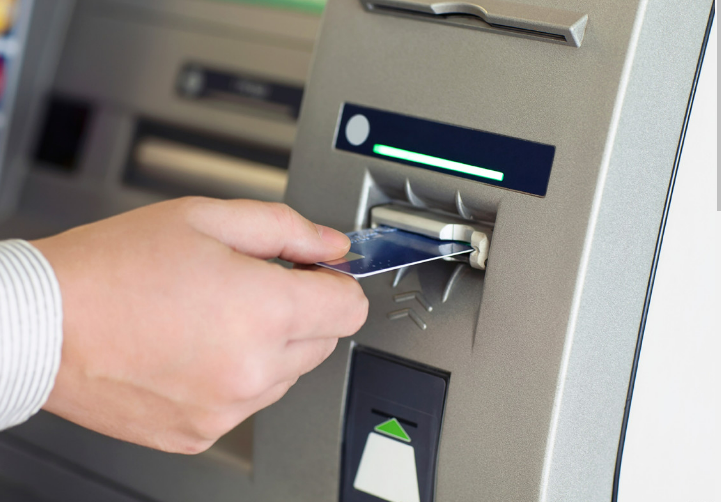10 Common Bank Fees and Charges

Banking serves as a crucial means of safeguarding and managing your finances, yet it often comes with associated costs. Major banks typically impose various fees on their checking and savings accounts, ranging from unavoidable monthly service fees to avoidable charges like overdraft or NSF fees, which arise from mismanagement of funds.
While these fees may seem negligible individually, they can accumulate significantly over time. The bright side is that many of these fees can be circumvented. By exploring different banks, comparing account options, and selecting the most suitable one, you can minimize your expenses. Having a bank account offers immense convenience, enabling direct deposit of your paycheck and convenient bill payments via smartphone apps. However, it’s crucial to avoid excessive costs stemming from avoidable bank fees.
Here’s a breakdown of the most common bank fees and strategies for mitigating or eliminating them altogether.
Account Maintenance Fees

Monthly maintenance fees are a common aspect of banking services, applicable to almost all types of accounts. Typically ranging from $4 to $25 per month, these fees vary based on the account type and associated conditions.
Savings accounts usually have lower monthly maintenance fees due to their primary purpose of accumulating funds over time, rather than facilitating numerous transactions like direct deposits or debit purchases.
Conversely, checking accounts, utilized for daily transactions, often incur higher monthly service fees. This is because they support frequent use for activities such as automatic payments and ATM withdrawals.
How to Save:
Certain accounts may waive or lower monthly fees if you uphold a minimum monthly balance. Additionally, many banks provide no-fee checking account options, but it’s crucial to review the terms thoroughly. While these accounts may not have monthly maintenance fees, they could still impose smaller charges for routine transactions.
ATM Fees

While most banks won’t charge for using their own ATMs, using third-party machines can incur fees. Expect to pay fees to both the machine’s owner and potentially your own bank for using non-affiliated ATMs. These fees can add up, sometimes reaching $3 or $4 for a simple $20 withdrawal. Additionally, some banks impose limits on monthly ATM visits, even at their own locations, offering a set number of free transactions before charging fees for exceeding the limit.
How to Save:
To minimize ATM fees, it’s best to plan ahead and use your bank’s ATMs whenever possible. Avoid third-party ATMs, especially those at convenience stores or bars, as they often charge higher fees. Consider getting a checking account with unlimited transactions, although it may come with a higher monthly service fee. Fortunately, many establishments now accept debit or credit card payments, a trend that accelerated during the pandemic with the rise of contactless payments.
Overdraft Fees

Overdraft fees are straightforward: if your checking account goes into the negative, your bank may cover the shortfall but will charge you a hefty fee for the service.
It’s a common occurrence—we forget about upcoming bills or unexpected checks clearing, and suddenly our account is in the red. These fees typically range from $35 to $50 each, and if you attempt to use your debit card again while in overdraft, you may incur multiple charges.
How to Save:
Your bank likely offers overdraft protection, but you usually have to opt-in to activate it. One option is linking your savings account to cover overdrafts, avoiding extra fees. Alternatively, you might use your credit card for overdraft protection.
Another approach is instructing your bank to decline any transactions that would overdraw your account. However, this could lead to difficulties at checkout or additional fees from companies with automatic payments.
For instance, if your car or life insurance payment is denied due to insufficient funds, these companies may impose their own penalties, potentially resulting in higher interest rates, vehicle repossession, or canceled insurance.
Insufficient Funds Fee (NSF)

An insufficient funds or non-sufficient funds (NSF) fee operates similarly to an overdraft fee, typically falling between $25 and $50, depending on the account and bank. Unlike an overdraft fee, your account won’t go into the negative; instead, instant transactions, like debit purchases, are simply denied. NSF fees often occur when a check or automated payment exceeds your account balance.
How to Save:
If you make an occasional mistake, your bank might be willing to waive the charge, especially if you have a good history with them. However, if it becomes a frequent issue, you might consider opting for overdraft protection. While this service incurs its own costs, they’re typically lower than the hefty NSF fees. Alternatively, you could explore banks or account types that don’t charge for NSF situations. Ultimately, the goal is to manage your finances well enough to avoid this being a regular concern.
Excess Transaction Fees

Many accounts, including savings and checking, come with transaction limits. Savings accounts are typically capped at six withdrawals per month due to legal restrictions. Checking accounts may also have limits on cash withdrawals, online bill payments, and debit purchases. Exceeding these limits can result in additional fees ranging from $8 to $20.
How to Save:
During the pandemic, some banks adjusted their withdrawal policies. It’s essential to understand the withdrawal limits specific to your bank and account type. If you find yourself exceeding the monthly withdrawal limit for a savings account, consider switching to a low-cost or no-fee checking account. Similarly, if you’re making too many transactions with your checking account, explore switching to an account type that offers unlimited transactions for a slightly higher monthly fee. In the long run, this could lead to lower overall costs.
Wire Transfer Fees

A wire transfer involves sending money directly from one account to another. It’s an alternative to writing a check, using apps like Venmo, or handing over cash. Wire transfers are particularly handy for international transactions, where sending money to a bank account in another country is necessary.
Typically, wire transfer fees range from $10 to $50. However, there are more cost-effective methods available for sending money, even for long-distance or international transfers.
How to Save:
The internet has revolutionized the process of person-to-person money transfers, offering numerous alternatives to costly wire transfers. Services like PayPal and Zelle operate across many countries, typically charging lower fees than traditional wire transfers. Another option is converting cash to cryptocurrency for transfer, although beware of price volatility.
For simpler transactions, if the recipient’s bank has a local branch, you can walk in and deposit cash directly into their account. You don’t need to be a customer of the bank, but you’ll need the recipient’s account details.
Inactivity Fees

Inactivity fees are straightforward: if your account remains dormant without any transactions for a specified period, your bank may deem it inactive and start imposing additional charges. Typically, this threshold is around six months to one year. Such fees can range from $10 to $20 per month.
How to Save:
If you’re not actively using a bank account, consider closing it altogether. Withdraw any remaining balance and allocate the funds elsewhere, perhaps in a mutual fund or ETF where they can potentially grow. Alternatively, if you prefer to keep the account open, ensure minimal activity to avoid inactivity fees. Set up occasional automated transactions, such as paying for a streaming service or scheduling small transfers from your primary account to the inactive one. This way, you can prevent the bank from flagging the account and imposing additional charges.
Lost/Replacement Card Fees

At some point in life, most people will experience the inconvenience of losing their banking cards, whether due to theft, misplacement, or accidental damage. Ordering replacements, however, often comes with a price tag. Banks commonly charge between $5 and $30 for new debit or credit cards. If you require expedited delivery of the cards, anticipate paying toward the higher end of this range.
How to Save:
The most straightforward strategy to evade these fees is to prevent card loss in the first place. Keep them securely stored in a wallet or purse rather than loose in pockets. However, if the cards are already lost, this advice offers little help. Fortunately, some banks waive replacement card fees entirely unless urgent delivery is required. Additionally, you might attempt to appeal to the bank’s sympathy by explaining an unfortunate circumstance, such as your purse being chewed up by your dog, to request a waiver of the replacement card fee. They may agree to waive it.
Paper Statement Fees

In today’s digital era, traditional methods like receiving paper account statements via mail or updating physical bank books have become obsolete. However, if you’re still opting for paper statements, it likely comes with a cost. Typically, banks charge around $3 per month per account for sending paper copies to your address.
How to Save:
If you’re adamant about sticking to paper statements, you’ll have to accept the associated fee or search for a bank that offers them for free. However, it might be time to embrace the digital age. You can access your online banking via a PC or smartphone and download all the necessary PDF statements. If you’re still receiving paper statements and being charged for them, you might need to contact the bank or visit in person to request to stop receiving them, as some online portals don’t have this opt-out option.
Account Closing Fees

Surprisingly, some banks levy a fee for closing your account. Fortunately, this typically applies to accounts less than six months old. Since most people don’t need an account for such a short period, this fee likely won’t affect many. Still, it’s an additional cost of $25 to $40 if it does come up.
How to Save:
Just… keeping the account open might seem like the easiest solution, but it’s not always that straightforward. Before opening a new bank account, consider whether you truly need it. Do you already have another account fulfilling a similar purpose? Also, if you’re planning to relocate soon, opt for a bank with branches in your future city to avoid the hassle of closing and reopening accounts.
Sometimes, it’s prudent to leave the account open for a few more months, especially if the early closure fee applies within a specific timeframe. Just ensure that the monthly service fees are less than the closing fee.
Credit Card Insurance and Foreign Exchange Fees

These are not your typical bank account fees, but they’re worth noting nonetheless. Many credit cards offer balance insurance, which is a small percentage of your balance charged monthly to cover a payment protection plan. If you become unable to work, get injured, or pass away, the insurance may kick in. Depending on the policy, it could pause interest charges and payments or pay off most, if not all, of your balance.
Another common credit card fee is foreign exchange fees. When you use your card to make a purchase from a website based in another country, your card company will likely convert the currency for you, but they’ll charge you for the service.
How to Save:
You have the choice to cancel or opt out of a credit insurance policy at any time, typically with a simple phone call to your credit card provider. However, when it comes to foreign exchange fees, there’s no easy solution. If you frequently make international purchases, consider seeking out credit cards tailored for such transactions. While you may not receive the most favorable exchange rate available, it will likely be better than the standard rates offered by Visa, MasterCard, or American Express.
In Conclusion
Leveraging bank accounts and associated services can significantly simplify your financial affairs. From depositing paychecks directly into your checking account to managing bill payments and transferring funds to savings or investment accounts online, these tasks can now be effortlessly accomplished from the comfort of your home using a laptop or smartphone. It’s never been more convenient!
However, these conveniences come at a cost. Banks generate substantial revenue each year by levying various fees on their customers for almost every service. It’s prudent to conduct a brief assessment of your bank accounts to identify the fees you’re currently paying. If these fees appear excessive, it may be worthwhile to explore alternative account options or consider switching to a different bank altogether.



